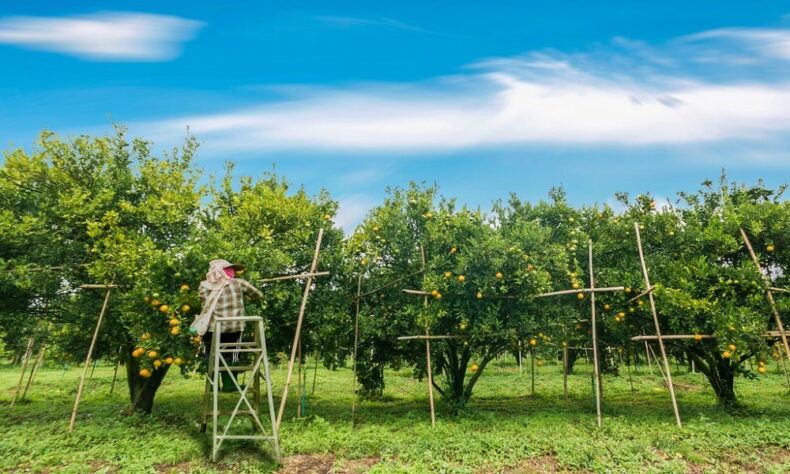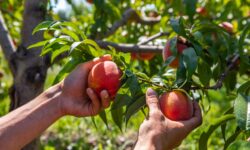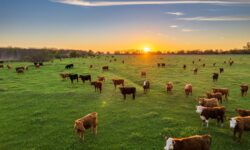Extreme weather throughout the year will cause a shortage of stone fruit in BC: We…
At Spud, we talk a lot about how much we love organic food and it appears that Canadians are starting to also love it more and more every year. According to recent research, “the organic market has increased more than four times in the last decade…” (1). In celebration of Organic Week, from September 9th to 15th, we thought we’d go over what makes organic food different than its conventional counterpart, so that you can feel more confident in your decision when buying organic or perhaps feel inspired to try it for the first time!
1. Compliance with the Canadian Organic Standards
The qualities that define organic food differ slightly between countries, however they share a common “principal goal…[which] is to develop operations that are sustainable and harmonious with the environment” (2). In Canada, the regulations around organic certifications vary slightly from province to province, however for B.C. and Alberta, all certified organic food must follow the Canadian Organic Standards (3). The Canadian Organic Standards is based off of four main principles:
- – Principle of health – Organic agriculture should sustain and enhance the health of soil, plants, animals, humans and the planet as one and indivisible.
- – Principle of ecology – Organic agriculture should be based on living ecological systems and cycles, work with them, emulate them and help sustain them.
- – Principle of fairness – Organic agriculture should build on relationships that ensure fairness with regard to the common environment and life opportunities.
- – Principle of care – Organic agriculture should be managed in a precautionary and responsible manner to protect the health and well-being of current and future generations and the environment.
2. Free from synthetic pesticides and fertilizers
Did you know that 96% of organic purchasers are for organic fruit and vegetables (4)? When you buy organic produce, they are free from chemical additives that are used in conventional farms to kill pests, such as bugs, or to enhance the growth of fruit-bearing plants. These additives are banned in organic farming because they can be harmful to human and soil health as well as biodiversity, thus causing damage to the well-being of the environment (5).
3. GMO-free
A GMO (genetically modified organism) is a plant or animal “whose genetic makeup has been modified in a laboratory using genetic engineering or transgenic technology” (6). There is currently no consensus on the safety of GMOs (7). That being said, although GMO crops may not be inherently unsafe, they are usually developed to be paired with harmful chemicals (see point #2) which can be harmful (8). From personal experience, when I worked on an organic farm, I was grateful to not work with synthetic additives on a daily basis and now as a grocery shopper, I enjoy not worrying about consuming chemical residue.
4. Free from artificial colors, flavors, sweeteners, preservatives and other processing aids
Do I even need to explain why this is good for us? When we buy organic, it is guaranteed that our food is made of just food, not food-like ingredients.
5. Animal welfare
Organic meat is determined by both how the livestock is raised and what they are given to eat. To be certified organic, “livestock must have access to pasture, eat only organic feed, [and cannot be] given growth hormones or routinely given antibiotics” (9). In short, the practices that are required to make meat organic ensure a better life for animals raised for the meat industry.
Will You Buy Organic?
Buying organic is one of the best ways to support a sustainable food system. If you’ve never bought organic before and are interested in starting, the best place to start is by focusing on the dirty dozen. You can read more about what that means here. Your body and the planet will thank you!
Sources
1) Willer, Helga, and Julia Lernoud. The world of organic agriculture. Statistics and emerging trends 2017. Research Institute of Organic Agriculture FiBL and IFOAM-Organics International, 2017.
2) Government of Canada. Organic production systems: General principles and management standards. Canadian General Standards Board. 2018.
Honkanen, Pirjo, Bas Verplanken, and Svein Ottar Olsen. “Ethical values and motives driving organic food choice.” Journal of Consumer Behaviour: An International Research Review 5.5 (2006): 420-430.
3) “What Is Organic?” Canadian Organic Growers. https://www.cog.ca/home/about-organics/what-is-organic/
4) Organic Week. https://organicweek.ca/
5) Welch, Ross M., and Robin D. Graham. “A new paradigm for world agriculture: meeting human needs: productive, sustainable, nutritious.” Field crops research 60.1-2 (1999): 1-10.
6) “What is a GMO?” Non-GMO Project. https://www.nongmoproject.org/gmo-facts/what-is-gmo/
7) Hilbeck, Angelika, et al. “No scientific consensus on GMO safety.” Environmental Sciences Europe 27.1 (2015): 4.
8) De Vendômois, Joël Spiroux, et al. “Debate on GMOs health risks after statistical findings in regulatory tests.” International Journal of Biological Sciences 6.6 (2010): 590.
9) “What Is Organic?” Canadian Organic Growers. https://www.cog.ca/home/about-organics/what-is-organic/




